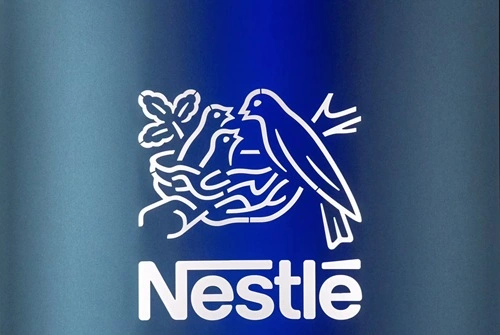Nestlé S.A., the Swiss food and beverage powerhouse, remains the world’s largest publicly traded food company, with presence in nearly every global market. In Q1 2025, Nestlé delivered organic sales growth of 2.8%, marginally exceeding analyst expectations, with reported revenues of CHF 22.6 billion (~US $27.2 billion). Price hikes of approximately 2.1%—especially on confectionery and coffee brands like KitKat and Nescafé—drove much of this growth, while volume growth came in at 0.7%, slightly below forecasts. Nestlé reaffirmed its 2025 outlook, targeting organic sales growth improvement and operating profit margins at or above 16–17%. As the company navigates commodity inflation, tariff uncertainties, and evolving consumer trends, a SWOT analysis offers clarity on its strategic position.

Strengths
1. Iconic Global Brand Portfolio: Nestlé holds a vast portfolio of over 2,000 brands, including global leaders like Nescafé, KitKat, Maggi, Smarties, Purina, and Gerber. These high-profile names power strong brand equity across categories.
2. Scale & Global Reach: Operating in nearly 197 countries with over 400 factories and ~339,000 employees, Nestlé benefits from unmatched scale and distribution reach.
3. Robust R&D & Innovation: Deep investment in research and development fuels new product launches and health‑science nutrition innovation. Nestlé continues to adapt to consumer trends like wellness, plant-based offerings, and nutritional transparency.
4. Financial Discipline & Diversified Revenue Streams: Despite macro volatility, Nestlé’s diversified offering spans beverages, confectionery, infant nutrition, pet care, and water, while targeting operating margins of ~17%.
Weaknesses
1. Reputation Risks & Ethical Controversies: Long‑standing reputational challenges—ranging from aggressive marketing of baby formula, water privatization debates, to past recalls (e.g., Maggi in India)—continue to affect consumer trust in some markets.
2. Dependence on Mature Markets: A substantial portion of Nestlé’s revenues is tied to developed regions like North America and Europe, making it vulnerable to regional slowdowns or saturation.
3. Complex Organizational Structure: Its massive scale and broad portfolio can slow decision-making; overlapping brands and decentralized structure may result in inefficiencies or brand dilution .
4. Price Sensitivity Erosion: Amid global inflationary pressures, Nestlé’s ability to pass on price increases without hurting volume remains challenged—first-quarter volume growth was slightly below expectations at 0.7%.
Opportunities
1. Health & Wellness Trend: Rising consumer preference for healthier, functional, and plant-based products opens avenues for innovation in infant nutrition, fortified drinks, plant-based proteins, and sugar‑reduced snacks.
2. Expansion in Emerging Markets: Nestlé can capitalize on rapid urbanization and growing middle classes in markets like India, China, and Latin America by tailoring products and leveraging its strong brand equity.
3. Digital & E‑commerce Growth: Leveraging e‑commerce, D2C platforms, and digital marketing offers new engagement channels and data insights—Nestlé is increasing digital avenues across markets .
4. Operational Efficiency & Portfolio Optimization: Under CEO Laurent Freixe, Nestlé plans to cut US $2.8 billion in costs by 2027, boost marketing to 9% of sales by 2025, and reorganize its water and premium drinks business into a standalone unit.
Threats
1. Commodity Inflation & Tariff Uncertainty: Rising costs for cocoa, coffee, dairy, and water rights pressure margins. Nestlé cited uncertainty around indirect impacts of U.S. tariffs despite most U.S. production being local.
2. Intense Competition & Private Labels: With competitors like PepsiCo, Coca‑Cola, Unilever, General Mills, and private-label brands gaining traction, Nestlé faces pricing and margin pressures across categories.
3. Climate & Resource Risks: Climate change impacts agricultural inputs (coffee, cocoa, dairy) and bottled-water sourcing, exposing Nestlé to supply instability and reputation risk.
4. Regulatory & Consumer Backlash: Increasing regulation on sugar content, plastic usage, marketing claims, and ethical sourcing requires continuous compliance investments—failure could trigger fines or brand damage.
Financial & Market Snapshot
- Organic Sales Growth (Q1 2025): 2.8% vs. consensus ~2.5%
- Reported Sales (Q1 2025): CHF 22.6 billion (up 2.3% year-over-year)
- Volume Growth: 0.7%, slightly behind expectations (0.8%)
- Pricing Contribution: ~2.1% of growth
- Target Medium‑Term Operating Margin: ~17% (with cost‑cuts of US $2.8 billion by 2027)
Future Outlook
Innovation & Health-Focused Growth: Nestlé will continue expanding its health‑science and plant‑based portfolio, aligning with global wellness trends and gaining share in functional nutrition.
Emerging Market Penetration: Strategic investments—such as those in India (~₹7,500 crore by 2025) and other fast-growth regions—will drive sustained revenue growth outside mature markets.
Digital Transformation & Consumer Engagement: Accelerating e‑commerce and D2C strategies across markets will allow Nestlé to build stronger consumer relationships, capture data, and improve margins.
Cost Discipline & Portfolio Pruning: Executing on its cost‑reduction roadmap and focusing investments on flagship brands while eliminating underperformers will enhance operational efficiency and margin resilience.
Sustainability & Brand Reputation: Progressive steps in ethical sourcing, transparency, water stewardship, and packaging sustainability can reinforce Nestlé’s global license to operate.
Mitigating External Risks: Navigating commodity inflation, geopolitical tariff volatility, competitive pressure, and regulatory shifts will remain vital to maintaining performance and brand trust.
Nestlé remains a commanding force in global food and beverage, powered by iconic brands, deep R&D, and unmatched global scale. Its future success will depend on how effectively it innovates toward health and sustainability, connects to digital-first consumers, and executes strategic realignment under evolving macroeconomic and regulatory conditions.